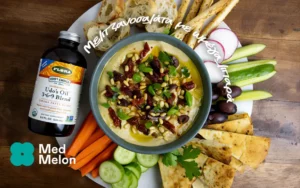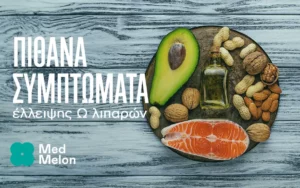Scientific Names of Acerola Cherry
Malpighia punicifolia L. or M. glabra L. [Fam. Malpighiaceae]
Forms:
Acerola cherry juice; acerola cherry extracts standardized for Vitamin C content
Traditional Usage:
– Aging Disorders
– Antibacterial
– Antifungal
– Antinflammatory
– Antioxidant
– Astringent
– Breast Pain and Discomfort (mastitis)
– Cellular Regeneration
– Cleansing
– Cold and Flu Prevention
– Detoxification
– Diarrhea
– Digestive Disorders
– Dysentery
– Fever
– Gastrointestinal Disorders
– Infections
– Hepatitis
– Liver Pains
– Postmenopausal Disorders
– Scurvy
– Stomachaches
– Tooth Decay Prevention
– Vascular Disorders
– Vitamin C Deficiency
Overview:
The fruit of the Acerola Cherry tree, Malpighia punicifolia L. or M. glabra L. [Fam. Malpighiaceae], is rich in Vitamin C and carotenoids and can be used for the prevention and treatment of vitamin C and A deficiency and scurvy. The cherry-like fruits are one of the richest known natural sources of vitamin C and can contain up to 4000 mg Vitamin C per gram of fresh weight, but typically contain around 1,500 mg/g. Green fruits have twice the Vitamin C of mature fruits. Oranges provide 500 to 4,000 parts per million Vitamin C or ascorbic acid, while Acerola assays in the range of 16,000 to 172,000 parts per million. Acerola can be up to 4.5% Vitamin C compared to 0.05% in a peeled orange. Compared to oranges, Acerola cherries also provide twice as much magnesium, pantothenic acid, and potassium. The Vitamin A content of acerola fruit ranges from 4,300-12,500 IU/100g compared to approximately 11,000 IU for raw carrots, and other vitamins present include thiamine, riboflavin and niacin in concentrations comparable to those in other fruits. In Barbados, the West Indies and South America, acerola fruit are commonly eaten fresh or made into jams or jellies. Acerola cherries are an excellent source of powerful antioxidants and are also rich in protein and mineral salts principally, iron, calcium and phosphorus and also have considerable anti-fungal activity. The free radical scavenging benefits of acerola are also useful for preventing abnormal growths and fighting cellular aging. Acerola’s mineral salts can aid in the remineralization of tired and stressed skin and the mucilage and proteins can help to hydrate and condition skin. Other traditional uses of acerola include: for treating breast pain and discomfort (mastitis); postmenopausal disorders; diarrhea; digestive disorders; dysentery; colds, fever; infections; hepatitis and liver pains; stomachaches and prevention of tooth decay.
Active Ingredients:
· Nutrient Units Value per 100 grams of edible portion (Proximates):
· Acerola West Indian Cherries (Raw) contain:
· Water 91.4 grams,
· Protein 0.4 grams,
· Total lipid (fat) 0.3 grams,
· Carbohydrate, by difference, 7.7 grams fiber, total dietary, 1.1g,
· Ash 200mg,
· Minerals: Calcium 12mg, Iron 0.2mg, Magnesium 18mg, Phosphorus 11mg, Potassium 146 mg, Sodium 7.0mg, Zinc 0.1mg, Copper 0.1 mg, Selenium 0.6mcg.
· Vitamins: Vitamin C, total ascorbic acid 1677.6 mg, Niacin 0.40 mg, Pantothenic acid 0.31 mg, Folate, total, 14 mcg, Vitamin A, 767 IU, Vitamin A 77mcg RE, Vitamin E 0.13 mg ATE.
· Acerola cherry juice contains: 1600.0 mg/100g of Vitamin C as ascorbic acid.
· Other constituents include: flavonoid-type antioxidants such as anthocyanins and proanthocyanidins, pectins, tannins, sugar, invert sugar, plant acids, red and yellow pigments, especially carotenoids, and essential oil.
Suggested Amount:
Acerola cherries can be eaten liberally as a food. Acerola juice and extracts are normally taken according to vitamin and mineral requirements or antioxidant status desired.
Drug Interactions:
None known
Contraindications:
None known
Side Effects:
None known
References:
de Medeiros RB. 1969. [Proportion of ascorbic, dehydroascorbic and diketogulonic acids in green or ripe acerola (Malpighia punicifolia)]. Rev Bras Med. 1969 Jul; 26(7): 398-400. Portuguese.
Duke JA. 1992a. Handbook of Biologically Active Phytochemicals and their Activities. CRC Press, Boca Raton, FL, p. 32.
Duke JA. 1992b. Handbook of Phytochemical Constituents of GRAS Herbs and Other Economic Plants. CRC Press, Boca Raton, FL, pp. 355.
Hwang J, Hodis HN, Sevanian A. 2001. Soy and alfalfa phytoestrogen extracts become potent low-density lipoprotein antioxidants in the presence of acerola cherry extract. J Agric Food Chem 2001 Jan; 49(1): 308-14.
Leme J Jr, Fonseca H, Nogueira JN. 1973. [Variation of ascorbic acid and beta-carotene content in lyophilized cherry from the West Indies (Malpighia punicifolia L.)]. Arch Latinoam Nutr. 1973 Jun; 23(2): 207-15. Portuguese.




